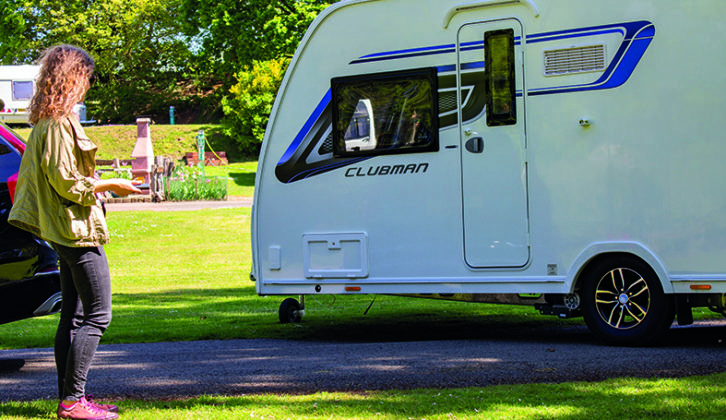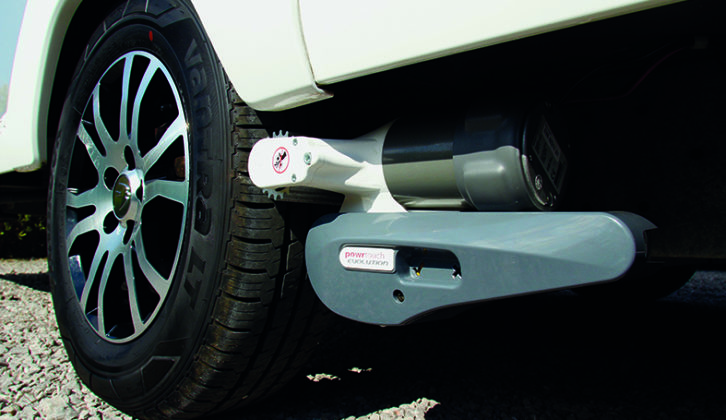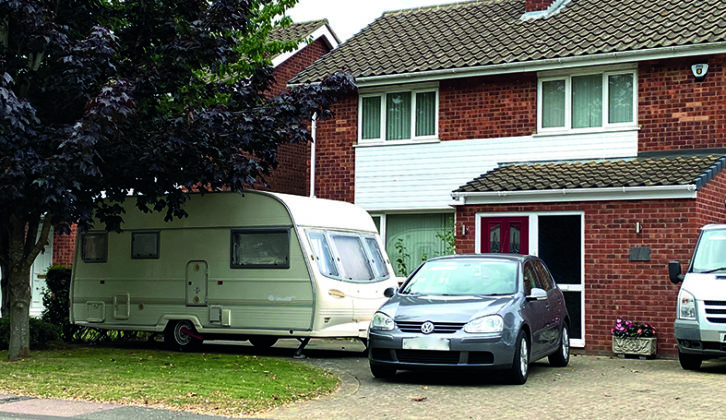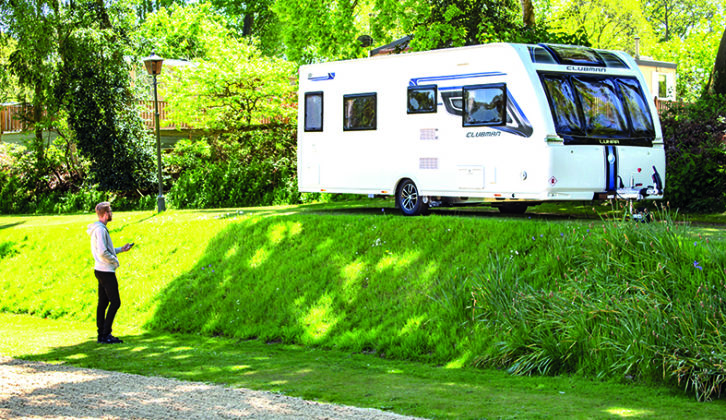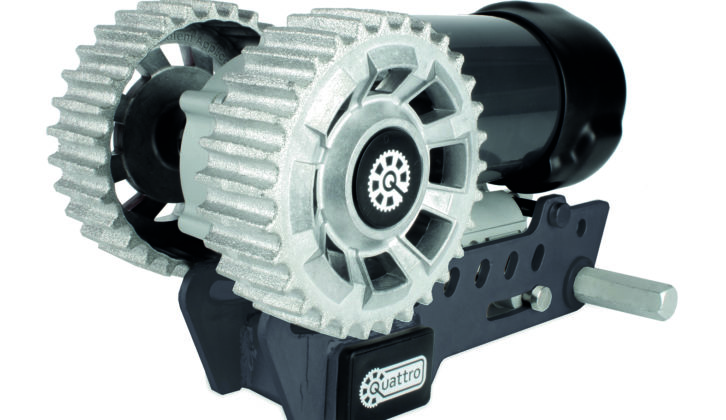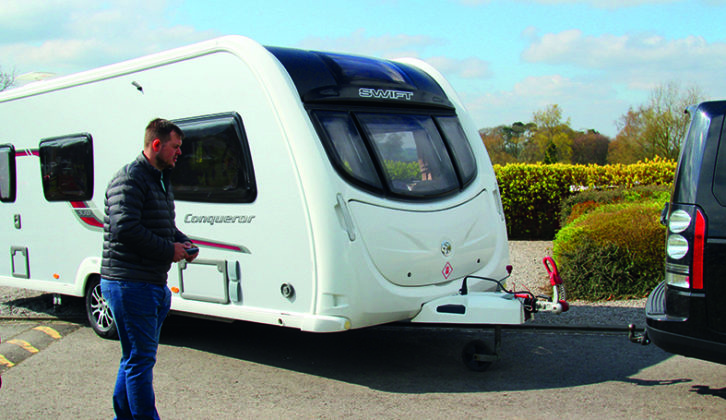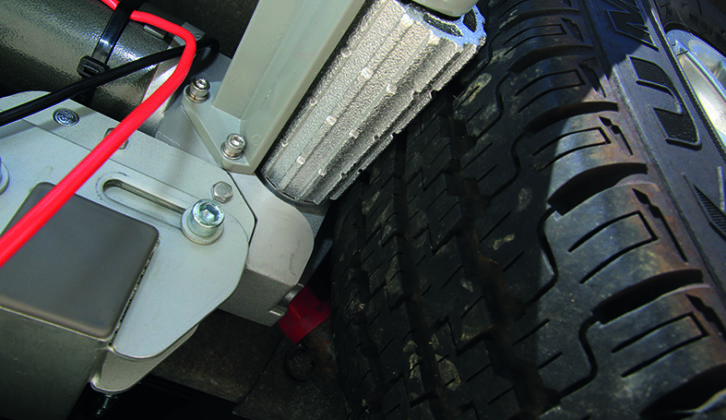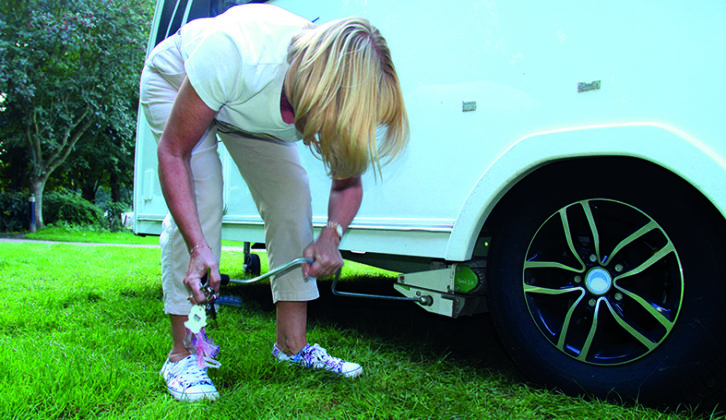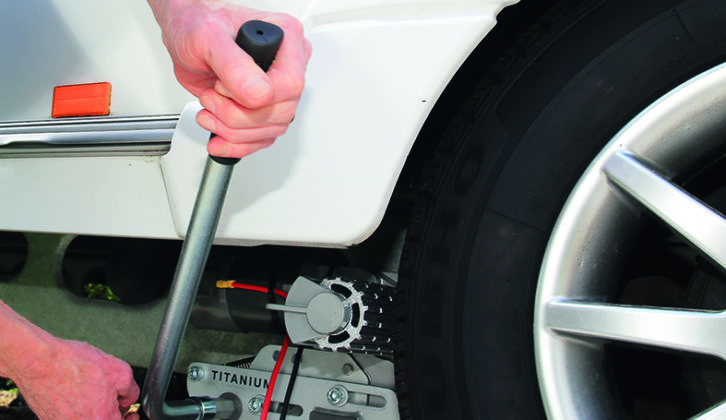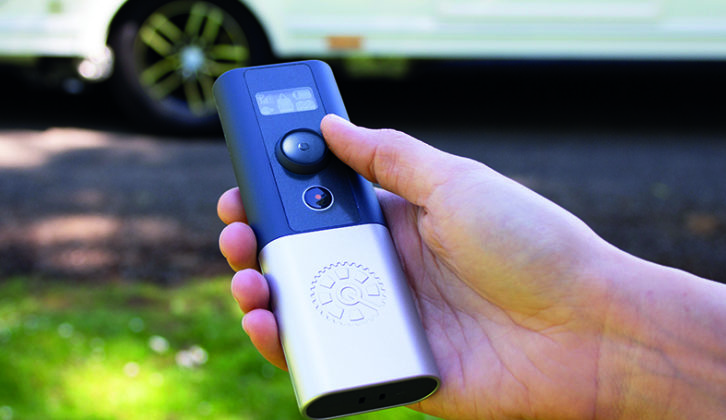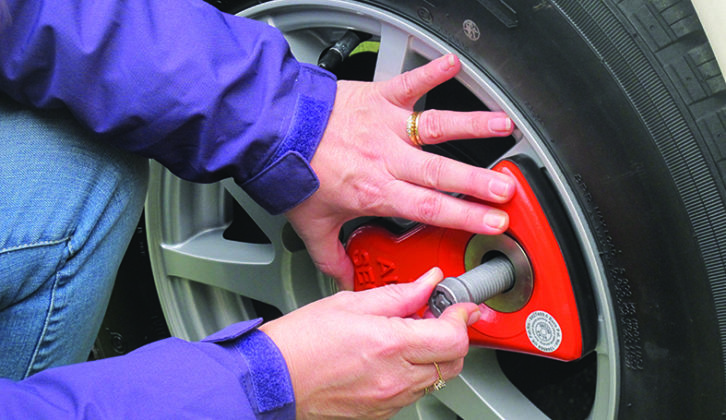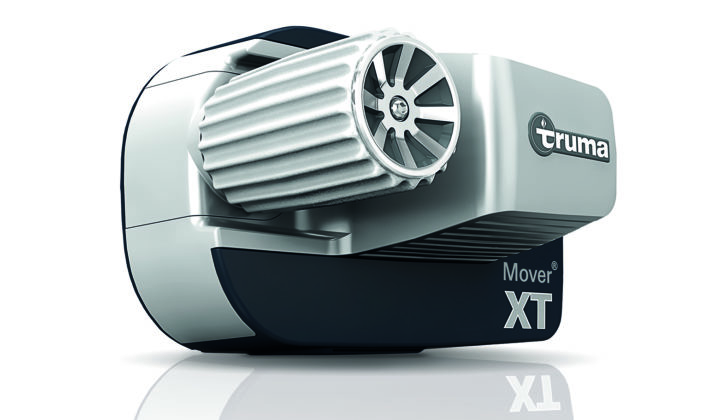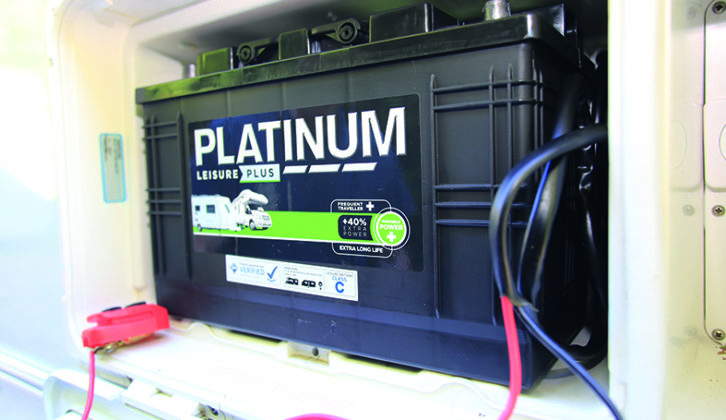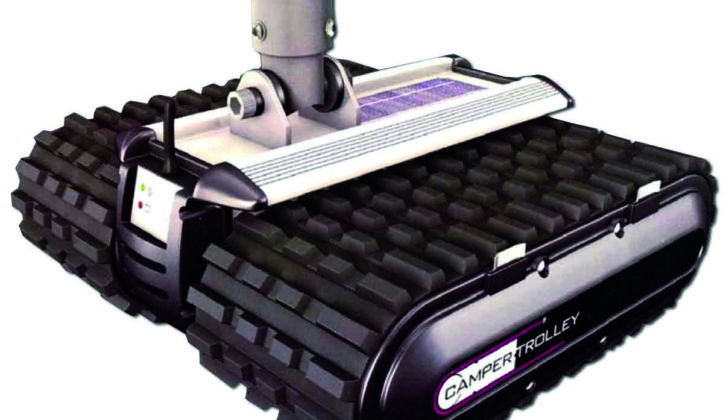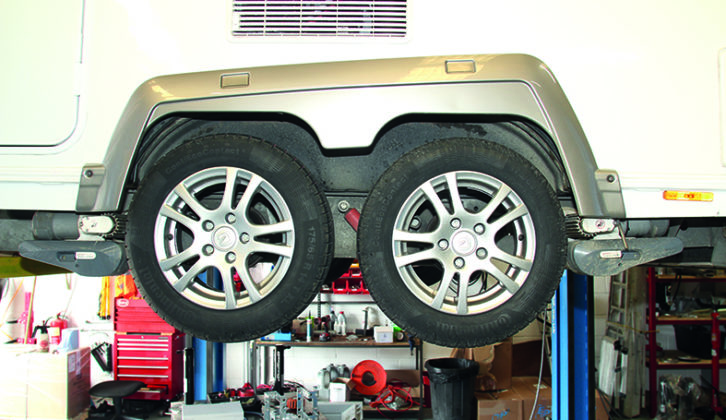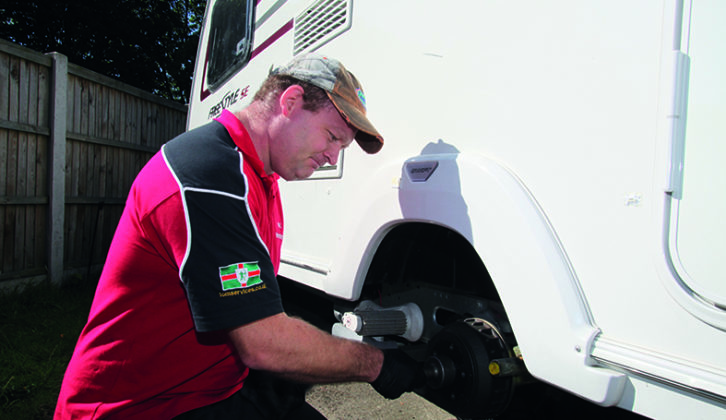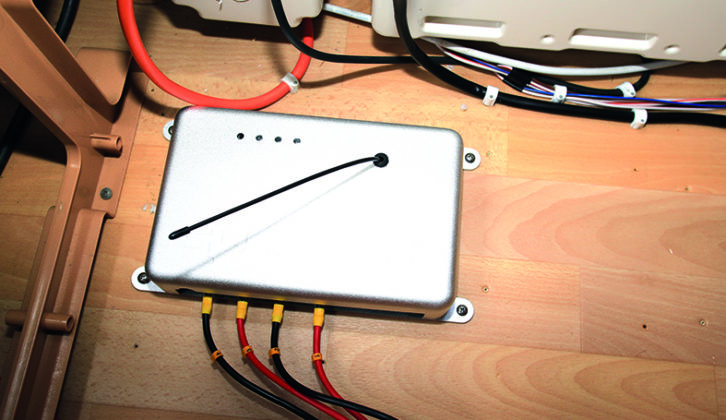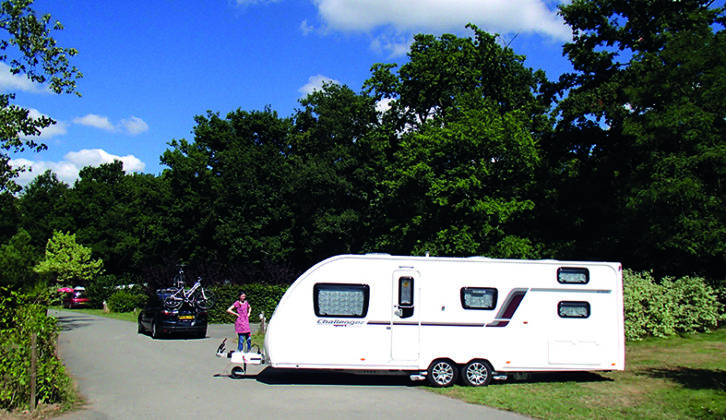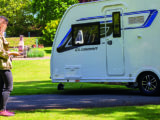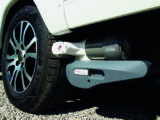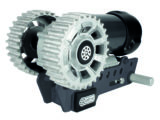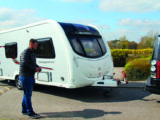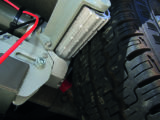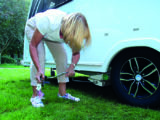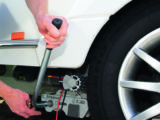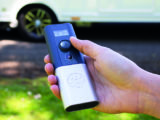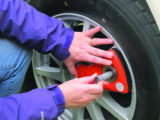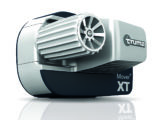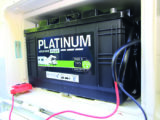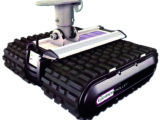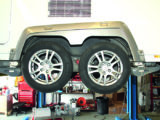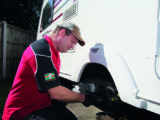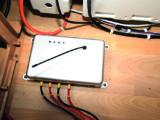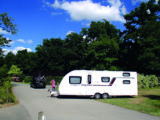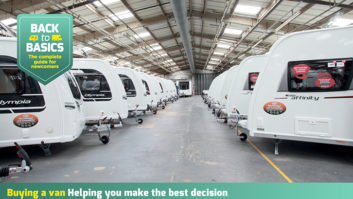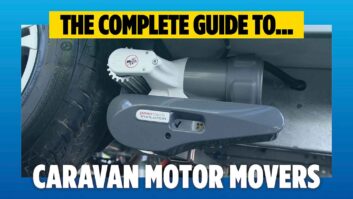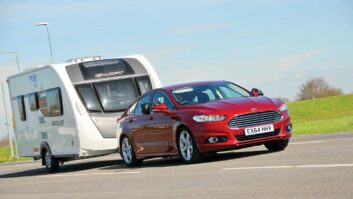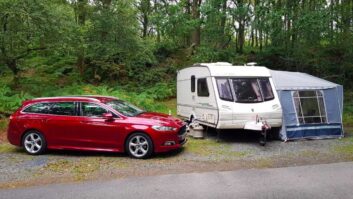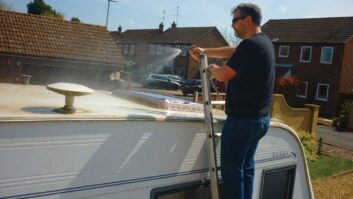It was my first full caravanning holiday. We’d arrived late at our campsite on lovely Isle de Ré, off the west coast of France, and found our pitch number taped to the door of the closed reception.
I was towing a pretty sizeable family four-berth, and my heart sank when I saw the entry to the pitch. The slender aperture had a brick-built barbecue on one side and some dense, scratchy bushes on the other. The entrance was off a sloping Tarmac campsite road, which was liberally doused with fine, dry sand (not ideal for my front-wheel drive tow car).
But those weren’t the only things that reminded me of an It’s a Knockout obstacle course – to make matters worse, I also had an audience. A dozen or so Belgian and Dutch guests were sitting around their lamps and fire pits, eagerly awaiting the evening’s entertainment, provided courtesy of the English team. No pressure, then….
I don’t recall how many points the turn involved, but I think I gained one degree of entry angle with each full-lock back and forth. Yet, with the heady aroma of flambéd clutch plate wafting across the site and my shirt drenched in sweat, I eventually slid the pristine Swift onto its spot, A ripple of applause drifted across from our foreign friends, although it was probably less in response to my manoeuvring, and more for the free lesson in creative English cussing.
Of course, these stressful shenanigans could have been avoided, with the addition of a very simple caravan accessory costing from around £600.
I’m talking about the humble caravan motor mover. This is a device that can pirouette your caravan on its axis like it’s Darcey Bussell, and all at the press of a button. Believe me, if I could have conjured one up right there and then, I would have paid double for it!
What is a motor mover?
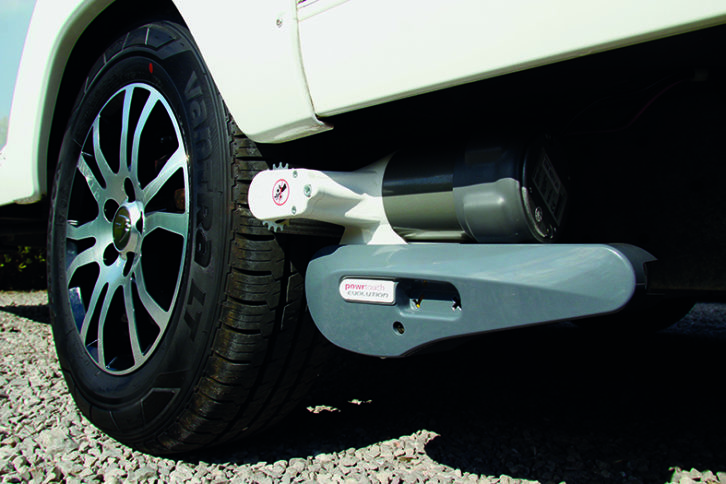
Motor movers come in several forms, but the best-sellers – and the ones that I’ll be discussing here – are compact units that bolt onto your caravan chassis, with rollers that slide out and press onto your tyres. At the push of a button, these rollers rotate, turning your wheels. As both wheels, or all four in the case of twin-axles, are driven, a caravan can be turned very sharply and precisely by driving the wheels(s) on just one side of the tourer.
Even at full power, the caravan will only be moving at a slow walking pace, so you shouldn’t need to worry that your beloved tourer will run away with you. In fact, most caravanners wish their movers were just a little quicker!
The sturdy motor unit clamps or bolts to the caravan chassis just in front of, or behind, the wheels. About the size of a shoe box, this unit has a steel chassis, attached to which is a powerful electric motor. This in turn is connected to the grippy metal rollers via gears. On most units, there gubbins are covered by sleek plastic covers, which protect the mover and make it easier to clean.
The power and electronics systems for the motor mover are installed inside the caravan, but you control it using a handset from outside. Your leisure battery provides the electric current to drive the motors, while a small electronic ‘brain’ unit (often fitted under a sofa, alongside your heater) receives the instructions from your remote control and sends them to the movers.
Under no circumstances should you try to power your movers by plugging your caravan into the mains (if you have a flat battery at home on the drive, for example). Doing this can cause irreparable damage to your control unit.
Why do I need a mover?
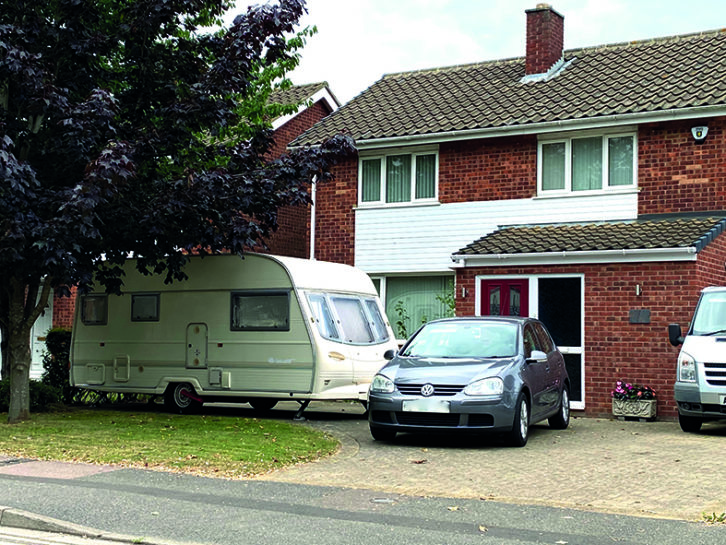
The story of my first attempts at pitching was a typically challenging van-manoeuvring situation, where a mover comes into its own.
For the less confident tow car driver, a motor mover can be an absolute boon, whether you’ve got a tricky pitch entry, like I had, or a tight parking space at home. Sloping drives can also prove difficult for caravan manoeuvring, and with little room for error, a mover is a must. You could buy a new mover with the year or two’s storage fees you save by parking at home.
Many users simply unhitch the caravan on the campsite road and manoeuvre in using the motor mover from there, whether it’s a difficult pitch entry or not. This can be especially handy if you’re on a muddy and slippery grass pitch.
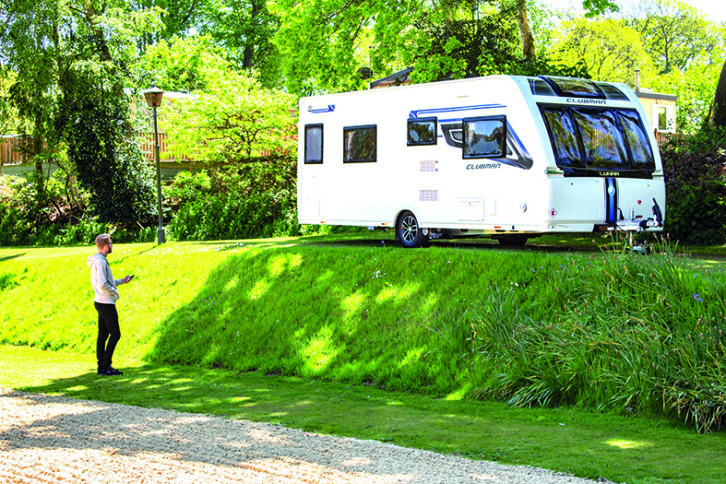
Older and less mobile caravanners will find that a mover can help to extend their touring lifestyle, because it removes the need for any manual pushing or pulling of the van to get it perfectly pitched.
With a motor mover you can also keep your caravan safer. It enables you to park your tourer ‘A-frame in’ when it’s stored on your drive at home, or to manoeuvre it into a position where it can’t be easily or quickly towed away by thieves.
The latest movers are also sensitive enough to position your tourer perfectly over the towball for hitching up, removing any danger of bashing your bumper.
How to use a motor mover
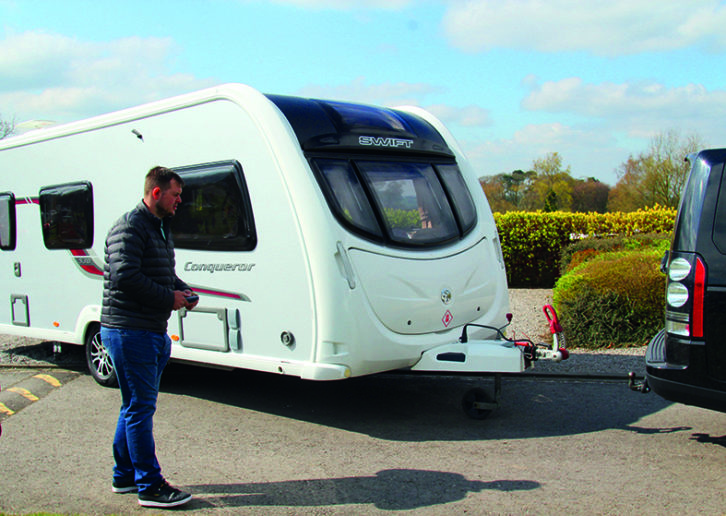
Pull up as close to your pitch or parking space as you can, and fully unhitch your caravan, lowering the jockey wheel and stowing the leads and cables safely. Now move your tow car out of the way.
Grab your remote control and check that the batteries are charged. (Always store your remote somewhere safe – mislaid control units are the most common reason for people calling mover suppliers.)
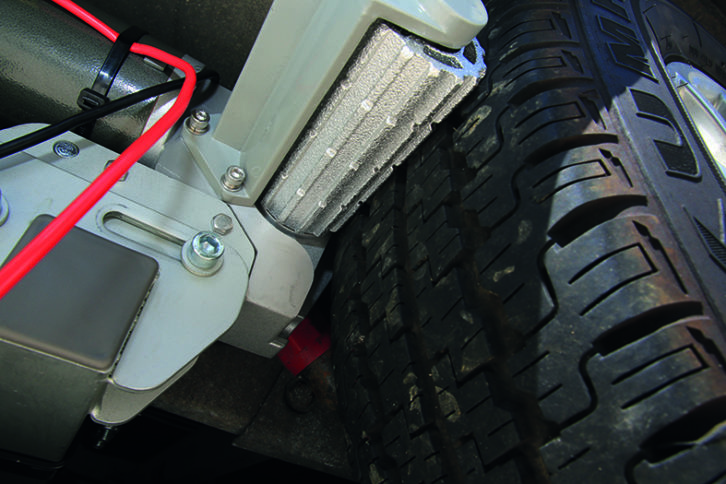
Your motor mover should have a master switch (a large red ‘key’), often fitted inside the battery locker. Turn this on.
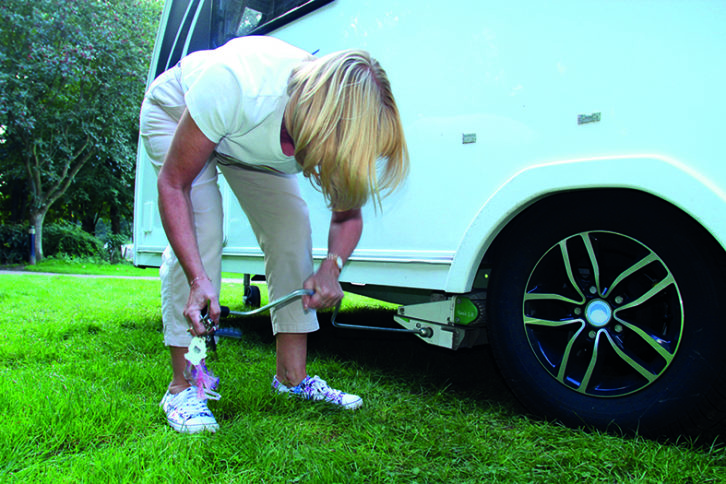
You now need to move the mover rollers onto the tyres. There are several ways to do this, depending on whether your mover is auto or manual. Manual movers require a little effort to engage the rollers on the tyre. This is done either by turning a large screw thread, which winds the roller out (slowly – like a corner steady), or by using a handle which rotates a spring-loaded cam system, sliding the roller forward in one motion. The latter is arguably quicker and easier, but may require some strength.
It’s simpler to use the auto-engagement systems, which slide the roller onto the tyre electrically at the push of a button. Of course, these tend to be more costly, but with one, you can park the caravan almost anywhere, as you don’t need to a access the mover yourself (just don’t get a flat leisure battery, and keep spare batteries for the remote control handy). In addition, bear in mind that while you will save money with a manual-actuation mover, you should buy carefully.
Screw-thread movers require each side to be actuated separately, so as well as involving twice the bending and effort, you also need to be able to access both sides of the caravan when it’s stored.
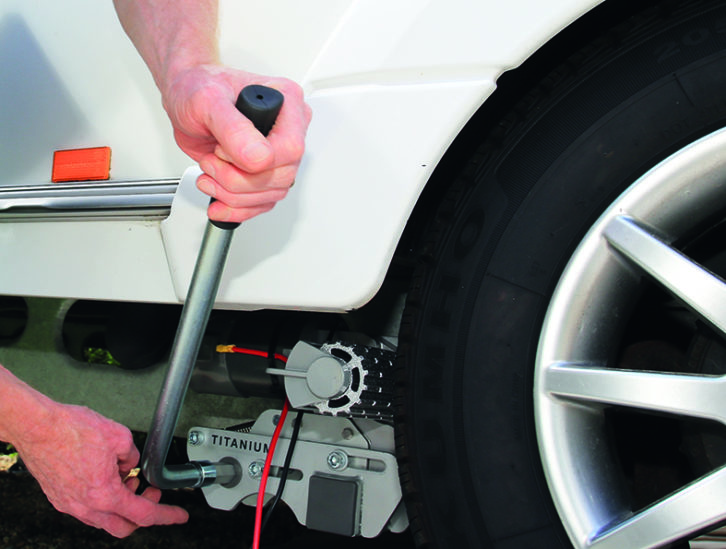
Cam actuators come in both independent and linked designs. With the latter cranking one side engages both movers, thanks to a long steel hex bar linking the units together under the van. If you park your tourer at home, against a wall, say, you will need to buy a mover system that you can access and actuate from either side, independently.
With the rollers actuated and pressed hard into the tyres, walk around your caravan and check for any obstacles. Now release your handbrake and you’re ready to ‘drive’ your tourer.
Most remote controls have simple arrowed buttons to move and direct the caravan, although the latest unit from Quattro has a small joystick, much like a games controller. Always ensure you’re holding the handset the right way around, so that you know which way the caravan moves forward, especially in tight spaces or anywhere near your tow car.
Turn on the remote control and press the button or the joystick in the direction you want the tourer to go.
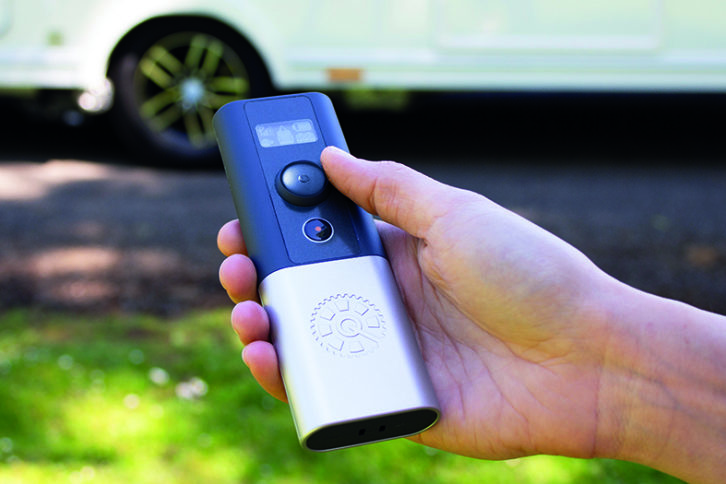
The signal from your remote is received by the control unit and this tells the mover rollers which way to turn. The compact, but powerful, motor turns a series of gears, which maximise the torque and dictate the speed at which your caravan will move. These gears drive the metal rollers, which are pressed into the tyre tread and rotate the wheel. And you’re off!
Keep looking all around your caravan as you manoeuvre it into position. When you’re happy, apply the handbrake and disengage the rollers from the tyre (in that order). Leaving them pressed into the tyre for an extended period could create a flat spot and increased vibration when towing.
Finally, turn off the master ‘red key’ power switch and stow your remote safely.
Weighty issues
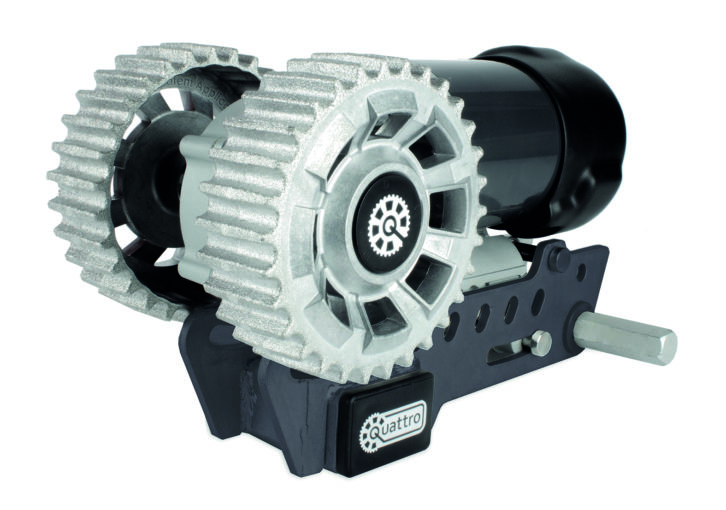
Select your mover carefully, bearing in mind its weight. A very lightweight single-axle motor mover, such as the e-go Titanium, weigh just 24kg, while a top-spec, twin-axle mover like the Reich Easydriver Pro Twin takes up 68kg of your payload.
Security benefits
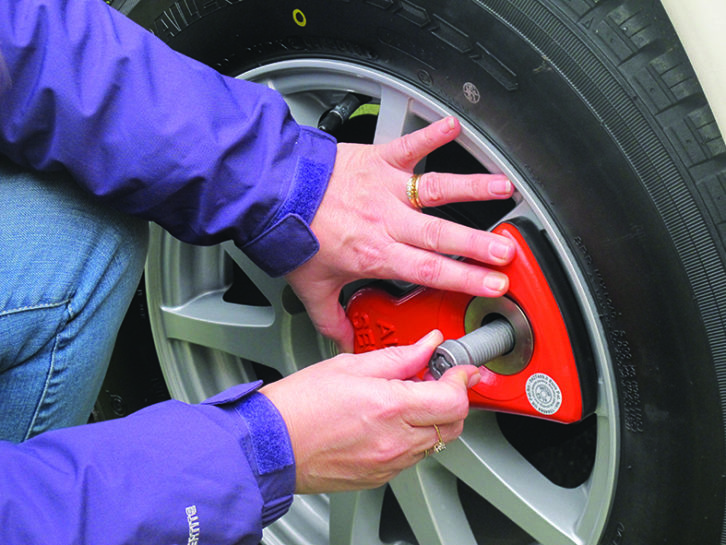
There are also security benefits to fitting a mover. Al-Ko Secure wheel locks are considered by many to be the best on the market, but fitting one can be a bit fiddly, because the wheel spokes need to be accurately aligned. Doing this manually can require a great deal of effort, but with a motor mover, it’s a doddle to make the numerous small adjustments required. Do check that wheel locks that encircle the wheel still fit with a motor mover attached.
Negotiating steep drives
Most modern motor movers are designed to negotiate steep inclines up to 20% (one-in-five). If you require this, check the mover you’re considering is sufficiently powerful to shift the weight of your van. Most movers will shift tourers weighing two to 2.5 tonnes, so are easily powerful enough for the average caravan.
What will it cost?
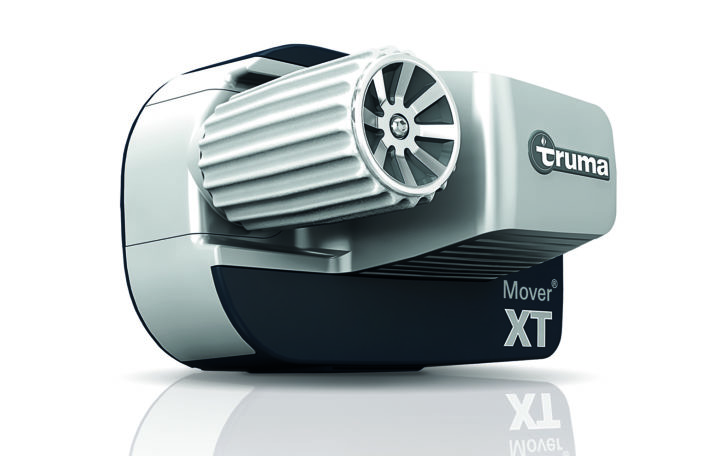
A brand new, high-quality, single axle motor mover system costs from around £500 to £1500, plus fitting.
For large, luxury twin-axle tourers, the top-of-the-range Truma Mover XT costs around £2000; or you could invest £2500 for the amazing Reich Easydriver Pro 3.1 Twin (AWD).
The budget-conscious among you will be pleased to discover that Purpleline’s Enduro Twin for double-axle tourers comes in at just £649.
You’ll also need to allow £150-£250 for professional fitting, although competent DIYers could do it themselves in less than a day.
Can I buy a cheaper used motor mover?
Yes, plenty of used motor movers are available online, via eBay and local selling sites such as Gumtree. Buy carefully and follow this advice:
- Choose a recognised brand
- Buy from a seller with plenty of excellent feedback – ideally at least 100 transactions and 98%+ positive
- Plan to see the mover system, if possible, before you buy
- Buying a used caravan? Negotiate with the dealership to see if you can get a free or cut-price motor mover included as part of the deal
Does my twin-axle tourer need four mover units?
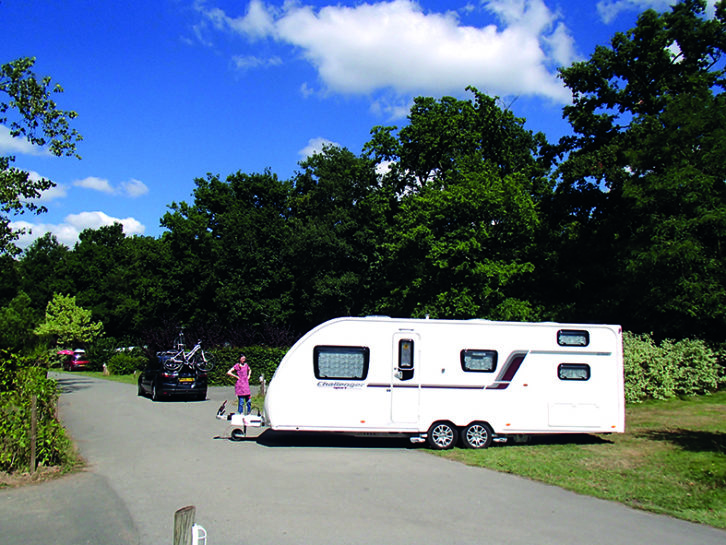
Ideally, yes. While two units might be able to move your caravan, for best performance and maximum manoeuvrability, a mover should be fitted for each wheel.
Can I tell if a motor mover has been professionally fitted?
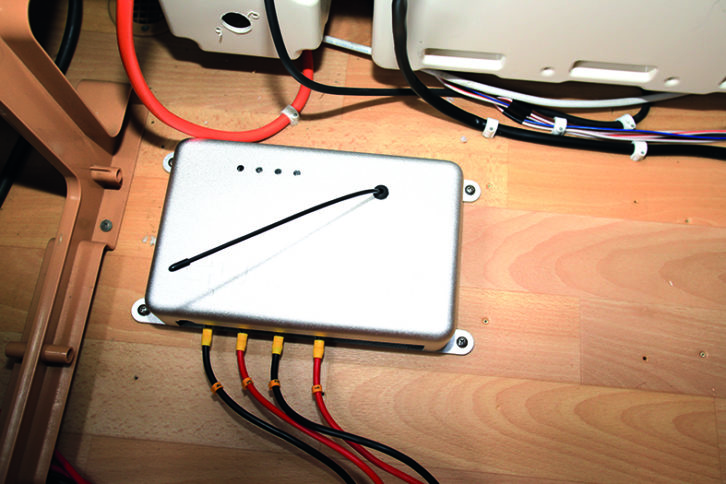
If you’re buying a used van with a motor mover, you need to know who fitted it. Look for these signs of a pro job.
- Protective trunking has been used to protect the mover cables from damage where they pass through any apertures in the caravan chassis
- The mover cables underneath the caravan are fixed neatly and securely to the underside and kept to similar lengths (to minimise power differences)
- Any holes in the floor are filled with silicone sealant
- The electric control unit is tidily and securely fitted in a locker or cupboard, or underneath a sofa
- A master switch has been fitted, usually in the battery locker
- The unit has sufficient ground clearance (minimum 150mm/6in)
Is my leisure battery good enough?
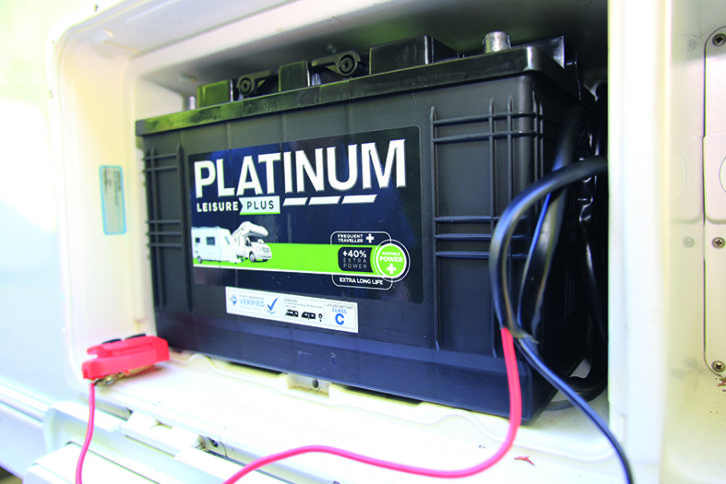
Motor movers require a lot of power, so a 110Ah leisure battery in good condition is a prerequisite for reliable operation. Check this larger battery will fit in your locker (especially if you are the owner of an older caravan). Keep the battery in good condition by regular or continuous trickle charging (with an intelligent charger), and do bear in mind that a good-quality 110Ah battery can cost over £100.
Motor movers for home parking
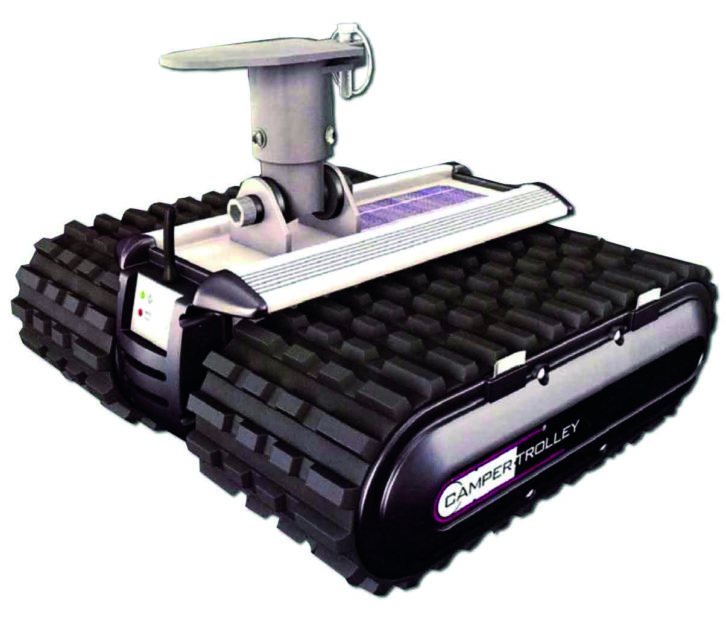
If you only ever need to manoeuvre your caravan on your driveway at home, and you don’t want the added weight of the motor mover unit on your tour all of the time, you might like to consider an alternative type of mover, which attaches to your A-frame or jockey wheel.
This is specifically designed for the purpose of occasional manoeuvring.
The Camper Trolley, for example, is remote controlled, has a lithium-ion battery and runs on rubber ‘tank’ tracks.
Bear in mind, though, that you might need to add nose weight to the caravan on slopes and slippery surfaces.
Do motor movers require regular maintenance?
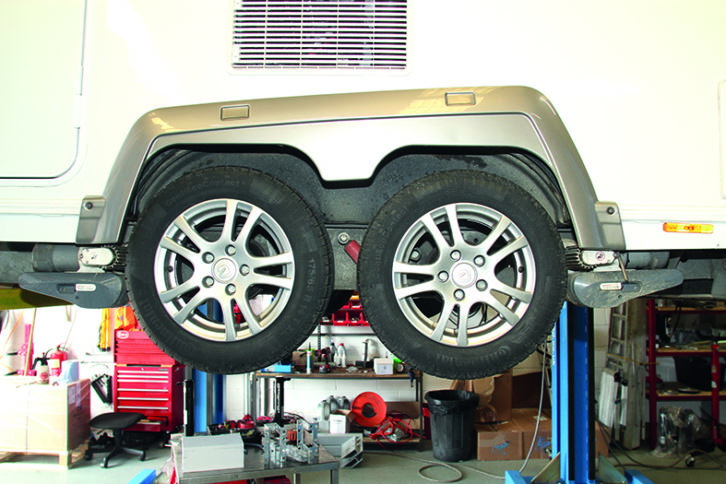
Motor movers will require very little in the way of maintenance, bar some lubrication during the annual caravan service.
However, we do recommend cleaning and greasing moving parts before your caravan goes into long-term storage, and you should consider activating the units briefly, to minimise the change of them seizing up, each time you visit your van.
How long is the warranty?
Most motor mover manufactures offer a five-year warranty, although some might have a cost attached to extend them (check the small print).
A well-maintained motor mover from a good manufacturer will easily last for a decade or longer.
Who should I get to fit it?
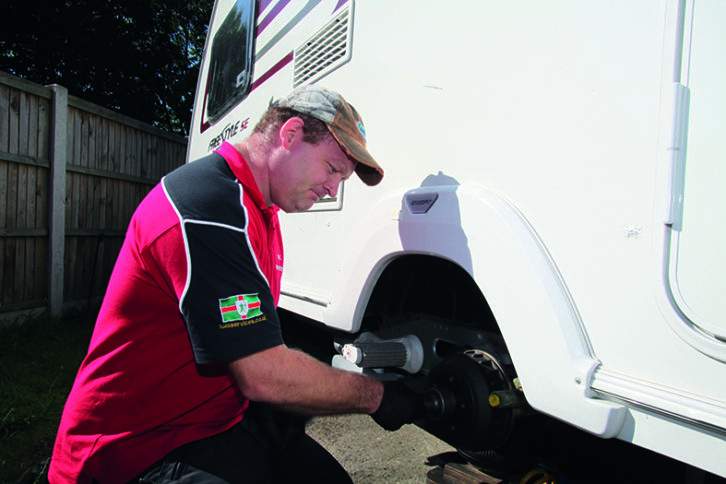
The selling dealership should be happy to fit your motor mover, but if you’re buying it from a manufacturer, consider an NCC Approved Workshop Scheme registered caravan technician, or one who is recommended by the maker.
Motor movers are simple to use and minimise the amount of physical effort required to manoeuvre your caravan. For some they’re a luxury, for others, a necessity, enabling them to continue caravanning for many more years.
BUYING GUIDE
Here are just some of the many major motor mover manufactures you could consider buying from:
Al-Ko: Al-ko’s slimline Mammut units are designed so that they don’t protrude below the caravan chassis, providing improved ground clearance.
E-go: E-go Plug & Play movers are powerful and robust, yet light weight; they’re also some of the most affordable on the market.
Emove: The neat Emove range offers buyers the choice of manual or auto roller engagement.
Powrtouch: Britain’s best-selling motor movers have all the bases covered, whatever spec you happen to be looking for.
Quattro: Quattro’s innovative technology crates easy-to-use movers at great price points… and they look really fantastic, too, with their dual-roller tech.
Reich: Designed and built ion Britain, these units are as robust as the name suggests. They are easy to use, too.
Rhyno: Designed and built in Britain, these units are as robust as the name suggests. They are easy to use, too.
Truma: Teutonic quality shines through with Truma’s excellent range of motor movers, which will shift caravans of up to a whopping 3100kg.
If you liked this… READ THESE:
Ultimate guide to storing your caravan
If you’ve enjoyed reading this article, why not get the latest news, reviews and features delivered direct to your door or inbox every month. Take advantage of our brilliant Practical Caravan magazine SUBSCRIBERS’ OFFER and SIGN UP TO OUR NEWSLETTER for regular weekly updates on all things caravan related.
Future Publishing Limited, the publisher of practicalcaravan.com, provides the information in this article in good faith and makes no representation as to its completeness or accuracy. Individuals carrying out the instructions do so at their own risk and must exercise their independent judgement in determining the appropriateness of the advice to their circumstances. Individuals should take appropriate safety precautions and be aware of the risk of electrocution when dealing with electrical products. To the fullest extent permitted by law, neither Future nor its employees or agents shall have any liability in connection with the use of this information. You should check that any van warranty will not be affected before proceeding with DIY projects.
The humble caravan motor mover is a device that can pirouette your caravan on its axis like it's Darcey Bussell, and all at the press of a button
